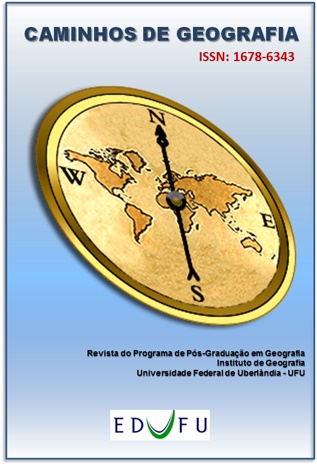PROCESSOS PEDOGENÉTICOS E SUSCEPTIBILIDADE DOS SOLOS À DEGRADAÇÃO NO SEMIÁRIDO BRASILEIRO
DOI:
https://doi.org/10.14393/RCG228155397Palavras-chave:
Caatinga, Propriedades dos solos, Antrossolização, DesertificaçãoResumo
As relações dos processos pedogenéticos específicos e a susceptibilidade dos solos à degradação no semiárido nordestino ainda não foram satisfatoriamente esclarecidas. Esse entendimento pode subsidiar intervenções e políticas públicas que atenuem e/ou revertam à degradação dos solos. O objetivo dessa pesquisa foi avaliar a relação entre processos pedogenéticos específicos e a susceptibilidade dos solos a degradação/desertificação nas microrregiões do Seridó e Cariri. Foram atualizadas as classes de solos das unidades de mapeamento (UM) dos estados da Paraíba e Rio Grande do Norte. Essas novas UM foram sobrepostas com áreas fortemente degradadas (AFD). Áreas degradadas estão predominantemente associadas com Luvissolos Háplicos Pálicos abrúpticos e Neossolos Litólicos Eutróficos típicos e fragmentários no Seridó e com Luvissolos Crômicos Órticos típicos e vertissólicos no Cariri. O predomínio da agropecuária na maioria das AFD confirma a forte pressão antrópica sobre o meio ambiente. A mudança textural abrupta aumenta a susceptibilidade dos Luvissolos e Planossolos à degradação. Antrossolização pode acelerar a erosão, salinização, sodificação e solodização. Como consequência tem-se perdas de solos, de sua qualidade física e assoreamento de corpos hídricos. As relações entre processos pedogenéticos e degradação das terras são compreendidas com a avaliação dos solos em níveis categóricos mais elevados (subgrupo).
Downloads
Downloads
Publicado
Edição
Seção
Licença
Autores que publicam nesta revista concordam com os seguintes termos: a) Autores mantém os direitos autorais e concedem à revista o direito de primeira publicação, com o trabalho licenciado sob a Creative Commons Atribuição-NãoComercial-SemDerivações 4.0 Internacional. b) Autores têm permissão e são estimulados a publicar e distribuir seu trabalho online (ex.: em repositórios institucionais ou na sua página pessoal), já que isso pode gerar alterações produtivas, bem como aumentar o impacto e a citação do trabalho publicado. c) Em virtude de aparecerem nesta revista de acesso público, os artigos são de uso gratuito, com atribuições próprias, em aplicações educacionais e não-comerciais.











